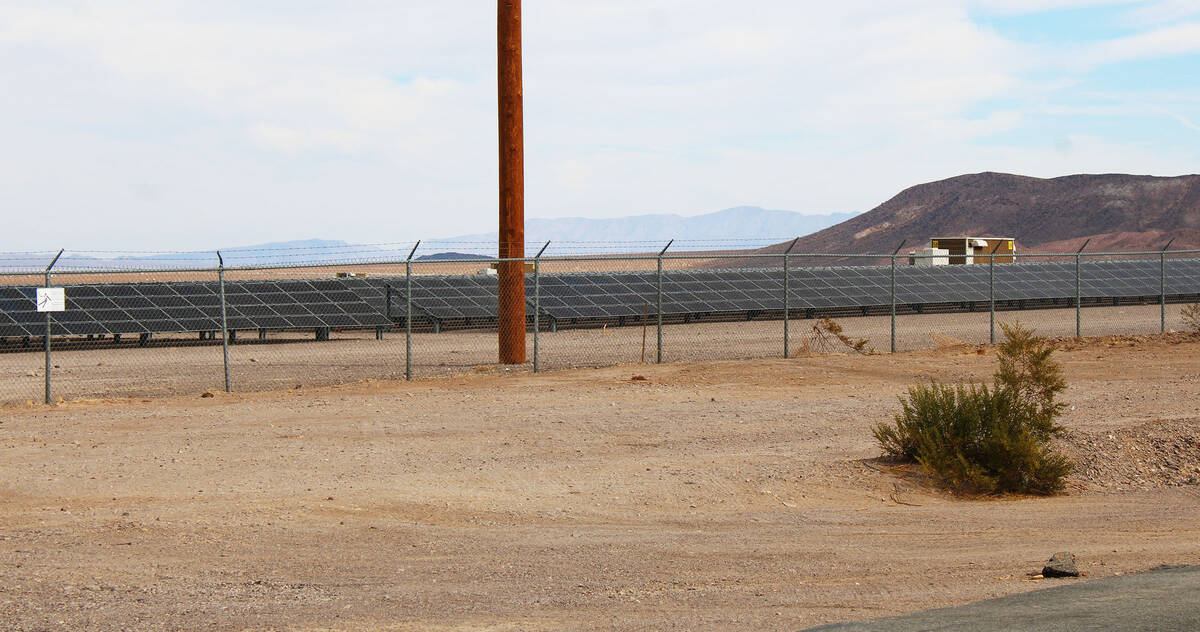
It was a pretty standard “happens every year” kind of presentation from the county.
Kim Lundgren, a third-party consultant, and Robert Burgy, climate and sustainability program manager of Clark County Department of Environment and Sustainability, spoke to the city council last week regarding the All-In Community Sustainability and Climate Action Plan in Southern Nevada.
In January 2024, Boulder City formally joined the Interlocal Agreement establishing the All-In Regional Climate Collaborative, alongside Clark County, the Regional Transportation Commission of Southern Nevada, the Southern Nevada Water Authority, and the cities of Henderson, Las Vegas, North Las Vegas, and Mesquite.
The presentation was a standard PowerPoint to outline efforts to address climate challenges and build long-term resilience throughout Southern Nevada. The All-In Regional Climate Collaborative was established, “To foster a unified and regional approach to climate action planning in Southern Nevada. This initiative is designed to enhance collaboration among local and regional governmental entities, enabling them to align policies, implement coordinated climate strategies, and pursue funding opportunities both individually and collectively.”
With Southern Nevada facing significant environmental challenges such as prolonged drought, extreme heat, and rapid population growth, the presenters said that the need for a collaborative approach is, “both timely and essential.”
The presentation was long on outreach efforts, meetings and survey results and much shorter on concrete outcomes with one exception. Burgy mentioned a $500 million federal grant that the group applied for and did not receive.
“One of the other things that we worked on was the all-in building improvement hub we had hoped with that $500 million grant that we would be able to build a one-stop shop for residents of the greater Clark County to be able to learn about how they can get incentives for home repairs or weatherization. While we didn’t get that grant, we did want to focus on distributing energy efficiency information and developing tools for distribution to residents,” he said.
He presented data on how much greenhouse gas was generated by specific activities.
“So the two largest sources in our region are on-road transportation and electricity use,” Burgy reported. “One of the important things about Boulder City is that the largest portion of your emissions comes from on-road transportation contributing 46% of and building energy makes up the second largest share at 33%. So as we do our regional climate activities we do look at each area to see where the greenhouse gas emissions are and how to address them.”
When it came time for questions from council members the wheels kind of came off the “standard” part of the process with questioning led off by Councilwoman Denise Ashurst, who started by asking if the estimate of vehicle miles traveled included the I-11 and US-95 that both run through town. Lundgren was not able to provide an answer.
“I do this work with local governments all over the country,” Ashurst said. “Highways aren’t always included because it’s not originating or ending here, it’s just pass through traffic. Transportation is not measured the same anywhere. It’s kind of odd that we’re all using different metrics throughout the country and so I don’t believe it’s included but I’d want to double-check and get that right back to you tomorrow.”
Ashurst continued on the transportation tip, noting the electric vehicles continue to be more expensive than gas and then moved on to the overall issue of climate change.
“I do thank you for what you’re doing, I think we all want to conserve any way that we can but I just thought it was a little over the top,” she said. “I thank you for what you do but I’m not really buying it, to be honest.”
Mayor Joe Hardy appeared to be unhappy with the city not getting any credit for the solar fields in the Eldorado Valley when it comes to regional emissions dropping.
“We live in Boulder City,” he said. “Has this taken into account the accolades that we get from all of our electrical solar fields?”
The consultant did not directly answer and just offered a future meeting to “dive more into the weeds on some of the analysis work to understand it.”
Hardy wasn’t done.
“I still have the floor,” he said. “The vehicle miles traveled, we have something called I-11. Before I-11, we had literally bumper to bumper traffic through the center of Boulder City. Have you looked at that? What the differentiation is?”
The answer was less than clear but appeared to be a “no.”
Bringing it back to the solar fields, Hardy asked, “What does NV Energy use as its power source to create electricity?”
“So the state of Nevada has a renewable portfolio standard that requires NV Energy to meet 50% of its generation from renewable sources by 2030 and so there is a mix. The No. 1 source however right now for NV Energy is natural gas,” Lundgren answered.
“I rest my case,” Hardy concluded.